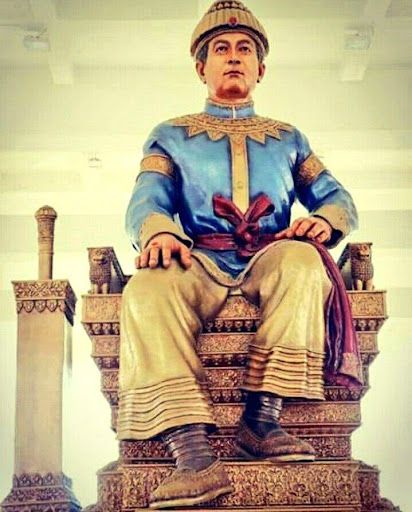For smooth Ad free experience
For smooth Ad free experience
The longest-reigning kingdom of the subcontinent, the reign of the mighty Ahoms was not a cakewalk. it required great statesmanship and farsightedness, along with perseverance. Luckily, Sukapha, the founder of the Ahom kingdom, showed all these qualities.

He was a great leader who knew how to tackle the tribal chiefs
Assam, popular for being the land of “lahe lahe" (slowly slowly), was cut off from the political fiasco occurring in the central part of the subcontinent. The region showed its love for “lahe lahe” even in terms of the development of society, economy, religion, and polity. The Assam referred to here is not the present-day state, instead, it referred to the entire northeastern region.
Various ruling families looked over the territories. Sometimes certain places were ruled over by tribes or sub-tribe chiefs, who would pay regular tributes to the power holders in the neighbourhood. They did not follow any ruling principles and had their own tribal rules, to which they were strongly inclined.
In this scenario, entered our protagonist: Sukapha, is a warrior from a ruling family who sets out with his followers looking for a place to create his own identity, his kingdom. According to the Ahom chronicles, Sukapha was accompanied by around 1000 people, which included a few nobles and many followers. Along with it, they had two elephants and 300 horses. (Horses in the lower Himalayan terrain! Big deal!) So, where did Sukapha come from?
The Ahoms are members of the Shan branch of the great Tai or Thai family ruling in South-East Asia. They got the name Tai because they were inhabitants of a place called Tyai-Shan, located near Mongolia and China. In around 5th century, they migrated to China and later to Mungrimungram in Yunan Province. The Ahoms consider this Mungrimungram to be their original homeland.
According to the Ahom chronicles (which Sukapha himself ordered to record), Sukapha left his kingdom because of a dispute with one of his brothers in 1215 A.D. As he moved towards the Patkai region, he gained the suzerainty of the tribal chiefs as he crossed them. The Wancho, Nocte, and Tangsa Nagas, who were indigenous to the region, resisted the Ahom's aggression. But Sukapha was adamant. He suppressed them with a heavy hand.
It took him 13 years to establish control over the tribes that inhabited the areas along his trail towards the Patkai region. This was not an easy task. It required great strategy, indomitable gallantry, and energy. He was a great leader who knew how to tackle the tribal chiefs. His usual policy was to approach with a friendly gesture and, if that failed, turn towards bloodshed.
There was a time when Sukapha took extreme measures to take over some tribal chiefs. He turned so violent that he compelled a person to eat the flesh of his son.
It was in 1228 A.D. that he reached the Brahmaputra valley. This year is marked in history by the advent of the Ahoms. Later in 1253 A.D., he settled in a place called Charaideo, located in the Upper Assam Valley where he established his capital. He appointed officials to help him in the affairs of administration and thus began the Ahom rule in Assam.
Sukapha’s main aim was to establish his kingdom. While extending his territory, he also made sure to win over the people he ruled. He lived among the tribesmen, learnt their languages, married their daughters, honoured their religion, and made sure his followers did the same. He lived the life of a commoner, cultivating crops himself just like any chief in the region would do. This made the Ahoms occupy the status of being a community that settled, instead of being foreigners who have come to rule.
0
You might be interested in reading more from
